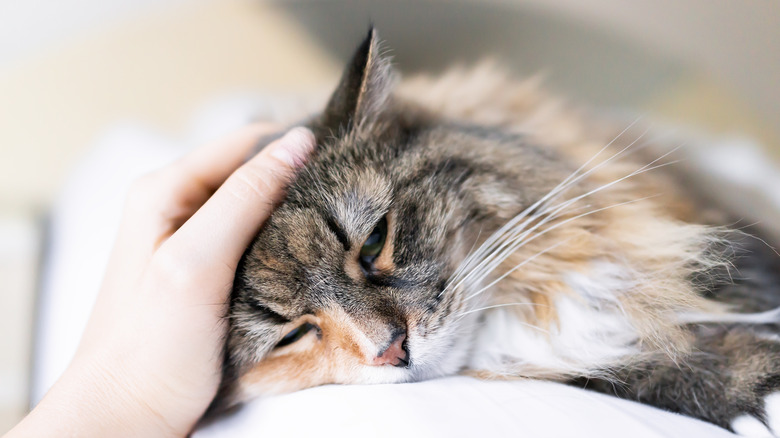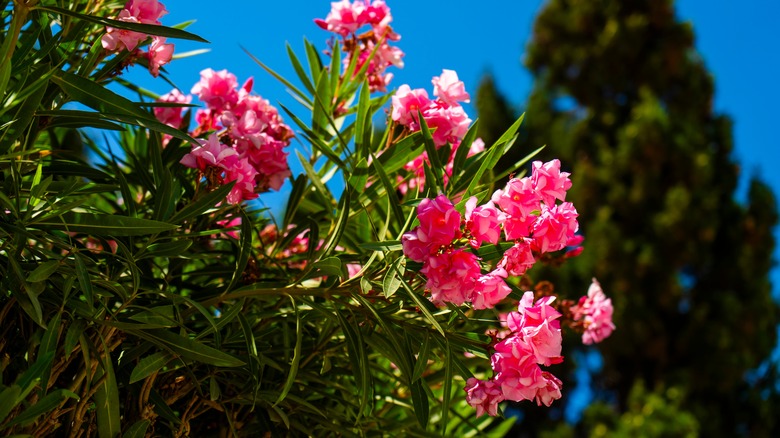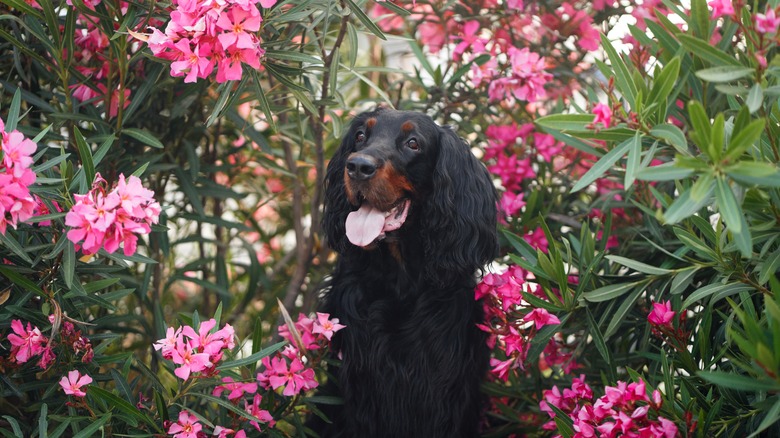The Beautiful Flower That Is Deadly For Your Beloved Pets
Many pet owners are experts on the no-no items in their house for their pets. Whether it's that secret hoard of chocolate, remembering to close the coffee tin tightly, or which plants shouldn't be grown around animals, they've got it down pat. Yet, one particularly dangerous flower may elude them — oleander (Nerium oleander). That's right! This charming flower can be deadly for pets, so owners need to be mindful if they plan to grow and care for oleander. To understand just how toxic these plants are to our favorite furry friends, House Digest reached out to Dr. Gary Richter, author of "Longevity for Dogs and Longevity for Cats" and the founder of Ultimate Pet Nutrition.
The holistic veterinarian, in an exclusive interview with House Digest, told us that the plant is extremely dangerous. "Oleander contains a cardiac toxin called oleandrin which can be deadly," he explained. Not only is oleandrin unsafe for animals, he added that it's just as perilous to humans.
Oleander poisoning symptoms to look for
It's almost unfair that such poisonous plants look so beautiful in gardens. Even so, oleander doesn't fail to be drop dead gorgeous. Oleander can lead to nasty side effects and even death, according to veterinarian Dr. Gary Richter. In an exclusive interview with House Digest, Richter said that symptoms can occur anywhere from 30 minutes to a few hours after exposure — depending on how a pet was exposed to the plant.
Those symptoms can include, "Vomiting, salivation, abdominal pain, diarrhea, lethargy, dilated pupils, lack of coordination, cardiac arrhythmia, [and] abnormal heart rate," per Richter. How the toxin takes root can depend on how much is eaten. "All parts of the plant are toxic although it must be consumed," Richter noted. "Touching or sniffing will not cause problems although water that has oleander leaves in it can also be toxic." Even if a pet is not exhibiting symptoms, they should be taken to see a vet if they consumed oleander flowers or leaves.
Animals should stay away even if poisoning is uncommon
No matter how pretty the picture, it's best to keep pets away from toxic oleander flowers. Dr. Gary Richter noted in an exclusive interview with House Digest that poisonings from the plant happen infrequently but shouldn't be ignored. "Oleander toxicity is not super common because the plant apparently isn't something animals find tasty," he explained. "That said, it does happen, and it is critical to keep pets away from areas where there are oleander plants as even consuming some of the leaves can be highly dangerous."
If you decide that getting rid of the oleander is the easiest way to keep your pets safe, be aware that these plants can be difficult to eradicate. They have an extensive root system which is known to thrive even around obstacles like rocks. So, to fully get rid of oleander, you must completely remove its root system to stop it from growing back. Oleander is native to the Mediterranean region and is considered invasive in Hawaii, Florida, Death Valley National Park, and Lake Mead National Park.


